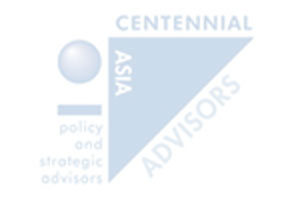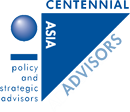212 714 0177
Free call
Asian Insights
A summary of “Asian Insights” weekly update is published here. The full version is available through paid subscription. Please click here to register your interest. Our executive will get in touch with you.

Highlights from the CAA Weekly Table:
- Asian political risks: We see the violence in Myanmar escalating, which will have broad regional ramifications. Thai protestors are taking their cue from Myanmar and provoking the military-dominated government there. ASEAN will also be left in a more awkward strategic position. Separately, the risk of more turbulence in Malaysia is growing.
- Asian economies: India’s growth in 4Q20 surprised positively but some of the details raise questions about the quality of the upturn, which will still depend heavily on herd immunity developing. Further movement on reforms in Indonesia gives us confidence that its economy is poised to accelerate sustainably. Singapore’s economy continues to rebound well but the upturn is narrowly based, depending heavily on manufacturing and finance. Hong Kong’s budget will support the economy in the short term but there did not seem to be much there to help the economy build back better for the longer term.
Strong upside in global demand likely, with Asian exporters the main winners
- Near term financial market risks can be managed, paving the way for a confluence of factors to generate a strong upturn in global demand for Asian economies.
- We see the drag from the pandemic dissipating rapidly – fears over new variants are overstated. We also expect capital spending to rebound vigorously as business confidence improves. Moreover, rising commodity prices will add further to Asian momentum.
- The lead indicators we follow provide support for this view: the OECD composite lead indicators are rising and in a broad-based manner. Our lead indicator for export demand in Asia is also pointing to a sharp upturn.
- Within Asia, China, Singapore and Taiwan lead the pack in terms of their gearing to the upside in capital spending that we foresee. Thailand, the Philippines and India appear likely to benefit the least relatively from this upside.
- However, there are potential downside risks from a stronger than expected global upturn. A key concern is the ramifications for Asian currencies – suggests the Indonesian Rupiah, the Philippine Peso, the Indian Rupee and the Vietnamese Dong could be most at risk.
Thailand: Downgrading our forecasts on sluggish economic momentum
- The Thai economy is set to underperform the region for a second year in a row due to its outsized dependence on tourism revenues for growth.
- We are also now less confident that a robust recovery in private domestic demand will take hold and employment recover strongly over the course of this year, given the continuing weakness in business sentiment – which may have been exacerbated by the political noise and uncertainty that have persisted for several months now.
- Even with some degree of resilience among consumers and expanding fiscal largesse, the bottom line is still a significant downgrade to our forecasts for 2021 GDP growth, from our original 4.0% to 3.3% now. However, we foresee growth accelerating to +5.0% in 2022 as the Thai economy makes up for lost ground.

Highlights from the CAA Weekly Table:
- Asian political risks: China is preparing legislative amendments that will in effect end the limited autonomy enjoyed by Hong Kong since July 1997. Geopolitical risks in East Asia are hotting up, with Taiwan the most salient risk. The situation in Myanmar is inching very close to the point where the military will crack down harshly on the protestors. Any one of these developments would serve to aggravate the current awkwardness in US-China relations.
- The normalisation of economic activity continues apace in Asia. Another quarter of record-high profits in India is fuelling expectations of an upside surprise to growth. Malaysia has loosened mobility curbs across large swathes of the economy, as the authorities prepare to kickstart the inoculation drive. The Philippines is set to follow suit but bureaucratic hold-ups keep the vaccination drive in abeyance.
- Policymakers are stepping up policy responses: Bank Indonesia cut rates, signalling its confidence in the Rupiah. The Duterte administration approved the creation of asset management companies that would help banks offload distressed assets and boost credit growth, which contracted for the first time in more than a decade amid tighter lending standards.
Indonesia: Jokowi still in the driver’s seat, with bright portents for reforms
- Recent surveys point to President Jokowi’s continuing popularity, despite his government’s incoherent response to the pandemic. President Jokowi has put his significant political capital to work with tough attempts to roll back growing Islamisation in Indonesia.
- The economic reform agenda clearly has legs. The draft implementing regulations for the omnibus bill on job creation virtually halves severance pay, which bodes well for the investment climate. Other planks of the reform agenda include the looming establishment of a land bank, the proposed revision of the negative investment list, bureaucratic reforms and tax hikes, all of which will provide a powerful cumulative impact to growth.
Singapore: A prudent Budget that misses the mark on required structural adjustments
- Policy support will significantly taper over the course of the year, with the estimated fiscal impulse reaching a record negative of -6.1% of GDP in FY21 (FY20: 12.5% of GDP).
- The optimal policy choice may have been to maintain a higher level of discretionary fiscal spending that catalyses a more robust recovery in the domestic-oriented sectors, as the economy awaits the pick-up in external demand.
- The longer term policies outlined in the budget statement do not go far enough to address Singapore’s challenges. Structural adjustments are needed to reverse the economy’s poor record on productivity and innovation. But these involve policy choices such as the desired rate of labour force expansion, governance standards within the government-linked corporate (GLC) sector and top-down industrial policy to boost local enterprise including small and medium enterprises which the government does not seem prepared to make currently.
